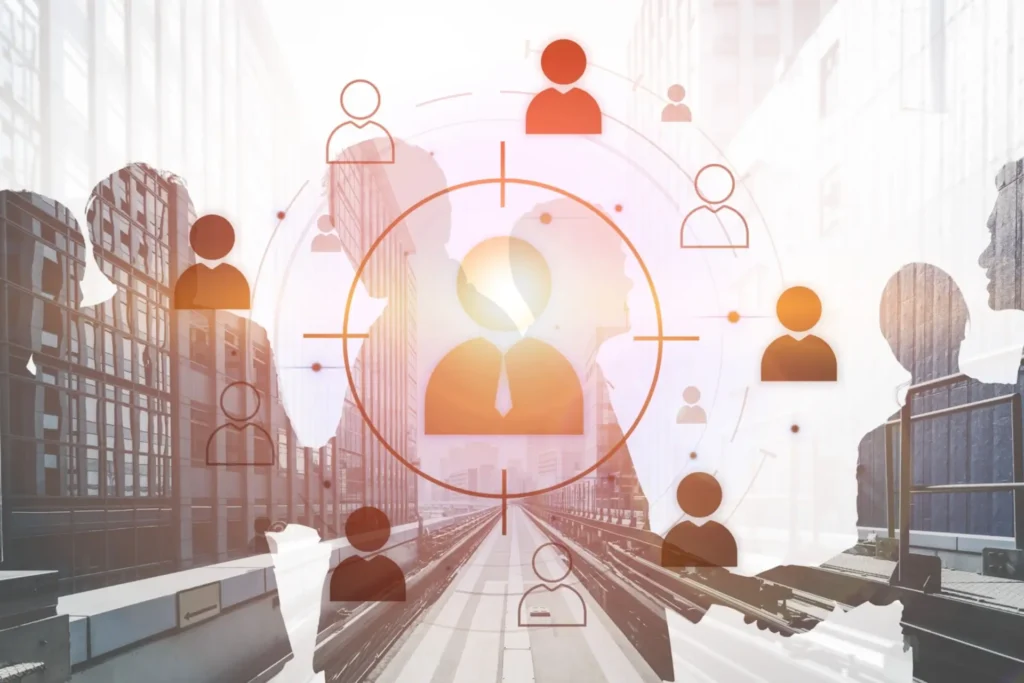Defining Social Impact Marketing
Modern consumers, citizens, and community members expect more from organizations than just products or services. They seek alignment with purpose. This shift necessitates a strategic approach beyond marketing and requires a commitment to social impact marketing.
Social impact marketing is not simply trying to drive corporate donations; it is a specialized discipline designed to drive positive community behavioral change and enhance community engagement. For organizations working in public policy, health, or social services, this approach is foundational to achieving their mission. At Magnitude of Change, we partner with socially-conscious organizations to move beyond awareness and achieve meaningful behavior change in their target communities.
This article will guide you through actionable steps for building an impactful and ethical strategy that will move your community from awareness to action.
Identify Your Authentic Social Impact Focus
The foundation of a successful strategy is authenticity. A campaign will fail if the cause feels tacked on or inauthentic to your organization’s mission.
1. Align Cause with Core Values: The social issue you choose must be natural and logically related to your organization’s core expertise and operations. This connection builds trust and makes the initiative sustainable.
2. Choose a Cause, Not a Conflict: When addressing serious issues, the focus should be on solving a community problem, not entering a political fray. Avoid touchy hot-button political topics that are divisive and instead focus on the unifying goal of behavioral change.
3. The Power of Niche: Organizations, especially niche businesses, government agencies, and specialized .orgs, can leverage their specific knowledge to tackle targeted issues. Focusing on a particular, relevant issue allows maximum impact and measurable results within a specialized vertical.
The Behavioral Science Engine: Driving Real Change
A strategy that succeeds at social impact is one built on science, not guesswork. This is the difference between general marketing and behavioral change marketing.

Our strategy is framed by the Funnel of Behavior Change, which guides the community’s journey from initial exposure (awareness) to sustained action (conversion). To move people through this funnel, we employ insights from behavioral science marketing:
- Understanding the “Why”: Behavioral science helps us understand the psychological and societal barriers preventing a desired action (e.g., policy adoption, health screening).
- The Power of Nudges: By applying principles like social norms (people are more likely to act if they believe their peers are) or framing effects (how a choice is presented), we can design campaigns that gently nudge people toward positive actions.
- Strategy vs. Tactic: The strategy is built on this more profound understanding of human motivation, providing the blueprint for ethical and impactful communication, regardless of the marketing tactic used.
Crafting Compelling, Data-Driven Campaigns
A compelling campaign respects the community while prioritizing action.
- Focus on the Community: The narrative should center on the community’s benefit and empowerment, not just on the organization’s efforts. We aim to create meaningful campaigns through ethical and inclusive marketing solutions.
- Action-Oriented Messaging: Every message should clearly articulate the desired behavioral change and make the action as simple as possible.
- Leveraging Data: Successful campaigns are data-driven campaigns. Use analytics to understand community behavior, identify communication gaps, and optimize messaging to maximize community engagement and reach. Technology is the indispensable engine for achieving precise, ethical behavior change at scale.
Measuring the Real Impact of Your Strategy
To prove success, you must measure the real impact of a behavior change campaign, moving beyond simple vanity metrics like impressions or clicks.
Key Performance Indicators (KPIs) for Social Impact:
| KPI Type | Definition & Example |
| Behavioral Change | The primary metric is a measurable shift in action. An example is a 15% increase in community uptake of a health service, measured in signups through a website. |
| Community Engagement | Measures the depth of interaction and reach. Example: The volume of user-generated content or sustained participation rates. |
| Social Outcomes | Linking the behavioral shift to a larger societal goal. Example: Reducing target social issue severity (e.g., lower recidivism rates, fewer DWIs). |
Platforms like the ORION Platform are explicitly designed to help marketing for government agencies and purpose-driven organizations connect marketing actions directly to these societal outcomes.
Application in Specialized Verticals: Government and Nonprofits
Social impact marketing is uniquely powerful in highly specialized and regulated verticals because their core missions are inherently about driving positive social change.
- Marketing for Government Agencies: Agencies are often tasked with complex mandates—from public health initiatives to policy adoption. Traditional commercial marketing usually fails here. Our specialized focus helps agencies simplify complex information and encourage widespread behavioral change (e.g., promoting vaccine uptake or compliance with new regulations).
- Nonprofit Marketing Strategies: For large .orgs, the goal is often to increase fundraising efficacy alongside tangible program results. Our approach drives community engagement and a measurable increase in actions that directly support the mission.
As a Certified B Corporation, Magnitude of Change is committed to these principles in our operations, reinforcing our expertise in this critical domain.
Sustaining Change
Creating a successful social impact marketing strategy demands authenticity, a scientific foundation in behavioral change, and a rigorous commitment to measurement. By following these steps, your organization can foster positive change that benefits the community and reinforces your mission.
The future of purpose-driven organizations requires a commitment to driving positive community behavioral change. Are you ready to go deeper than marketing?
Resources and Next Steps
Related Reading:
- Social Impact Marketing: Strategies for Driving Change
- Social Impact Marketing: How to Create and Measure Campaigns
- Behavioral Change & Communication Managed Services
FAQ
Q: What is the difference between Social Impact Marketing and CSR?
Corporate Social Responsibility (CSR) is often about corporate self-regulation or philanthropy. Social impact marketing is an active, data-driven marketing strategy designed to elicit a specific, measurable behavioral change in the target community.
Q: What makes Magnitude of Change specialized?
We manage campaigns for highly specialized and regulated verticals, applying behavioral science marketing principles crucial for public sector and large-scale non-profit missions.








